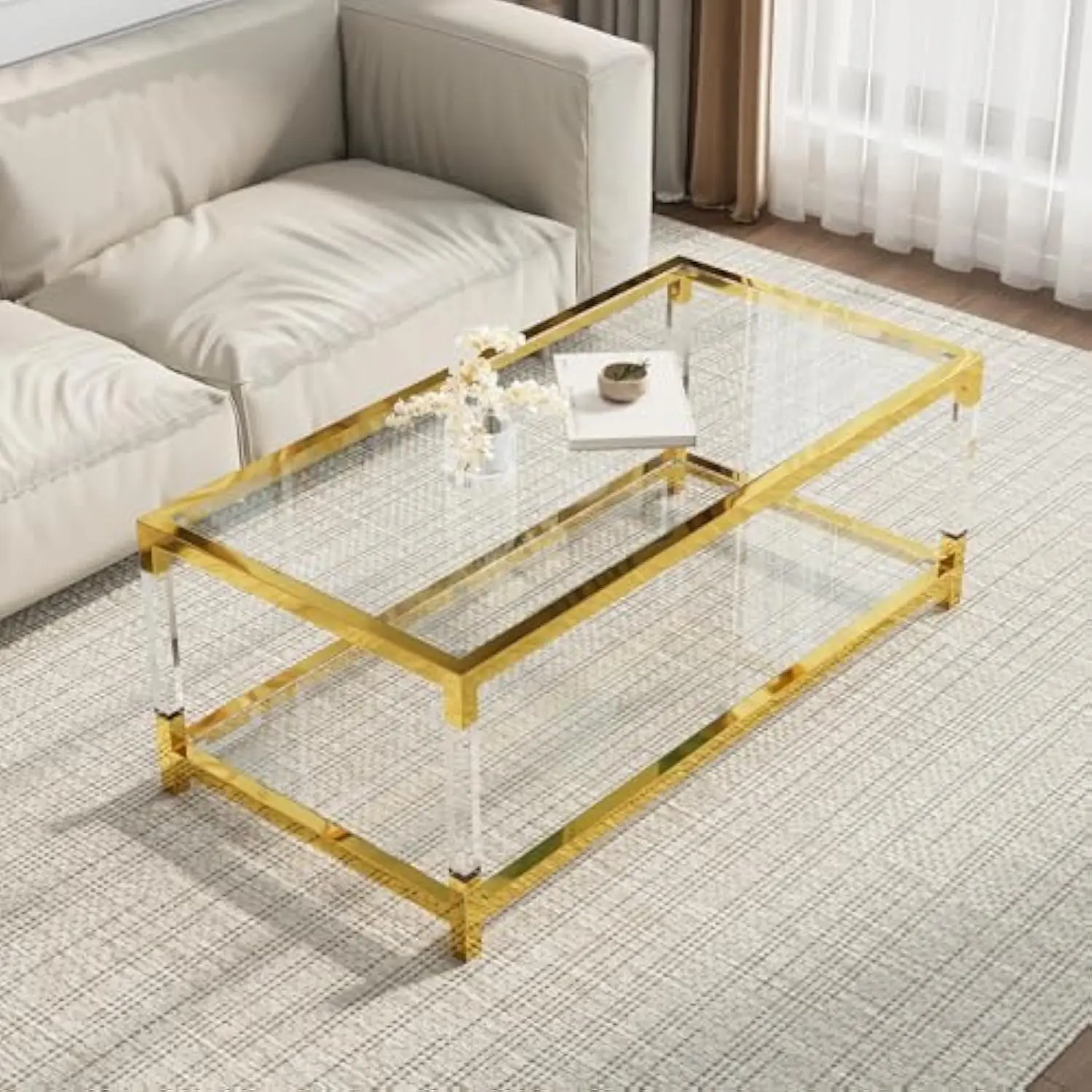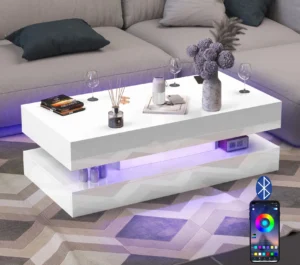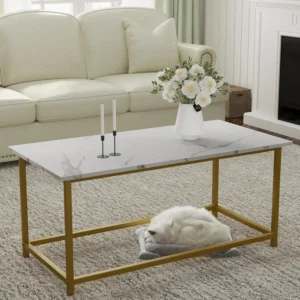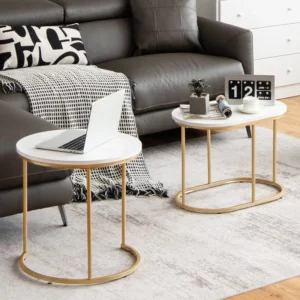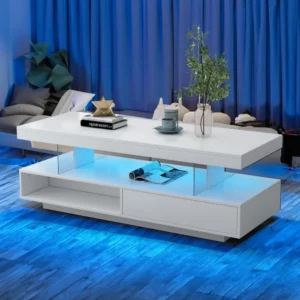Open-concept living spaces have become increasingly popular in modern home design, creating an airy, spacious feel that encourages interaction and flow. In these expansive layouts, furniture selection becomes critically important – and glass coffee tables emerge as perfect centerpieces. These elegant pieces do more than simply provide a surface for your coffee mug; they transform open spaces through their unique properties.
Glass coffee tables offer remarkable benefits for open floor plans – from creating visual expansiveness through their transparency to reflecting light throughout your space. Their ability to maintain design continuity while defining separate functional zones makes them invaluable in contemporary homes. Additionally, their versatility in design allows them to complement virtually any interior style while providing practical functionality.
Throughout this guide, we’ll explore how glass top coffee table ideas can revolutionize your open living space. We’ll examine the specific benefits these tables offer, showcase stunning design options, provide practical selection guidance, and share styling tips to maximize their impact in your home.
Why Glass Coffee Tables Enhance Open-Concept Living
When designing an open-concept space, every furniture piece significantly impacts the overall aesthetic and functionality. Glass coffee tables stand out for their unique ability to enhance these environments in ways solid tables simply cannot match.
Creating Visual Space with Transparency
The concept of “visual weight” is fundamental in interior design – it refers to how heavy or light an object appears regardless of its actual physical weight. Glass coffee tables carry minimal visual weight due to their transparency, creating the illusion of more floor space in your living area. This effect is particularly valuable in smaller open-concept apartments where maximizing perceived space is crucial.
The transparency of glass allows the eye to travel uninterrupted through the room, maintaining the open feel that makes these floor plans so desirable. Interior designers often recommend that at least 30% of furniture in small spaces should have some transparency to prevent visual crowding. Mid-century modern glass top coffee tables exemplify this principle, providing functional surfaces without creating visual barriers that segment your carefully designed open space.
Amplifying Light Throughout Your Space
One of glass’s most remarkable properties is its relationship with light. Glass coffee tables interact with illumination in three distinct ways:
- Reflection: Bouncing light upward and around the room
- Refraction: Bending light as it passes through to create subtle prismatic effects
- Transmission: Allowing light to pass through rather than creating shadows
These light-enhancing qualities become particularly valuable in spaces with limited natural light or during darker winter months. By strategically placing your glass coffee table near windows or light fixtures, you can effectively distribute brightness to darker corners of your open floor plan, enhancing the airy atmosphere throughout the day.
Maintaining Design Continuity in Zoned Areas
The fundamental challenge of open-concept design is creating distinct functional zones while maintaining visual continuity. Glass coffee tables excel at defining seating areas without erecting visual barriers that contradict the essence of open-plan living.
By allowing visibility of flooring throughout the space, glass tables maintain design flow between kitchen, dining, and living areas. They define zones through function rather than visual separation, supporting what designers call “zoning without walls.” Optimizing open floor plans with round coffee tables can further enhance this effect, as circular shapes naturally create conversation areas while their lack of corners promotes smooth traffic flow between zones.
The layout tips for glass-top mid-century coffee tables demonstrate how proper placement can balance openness with purposeful zoning, creating functional areas that still feel connected to the whole space.
Stunning Glass Coffee Table Designs for Open Spaces
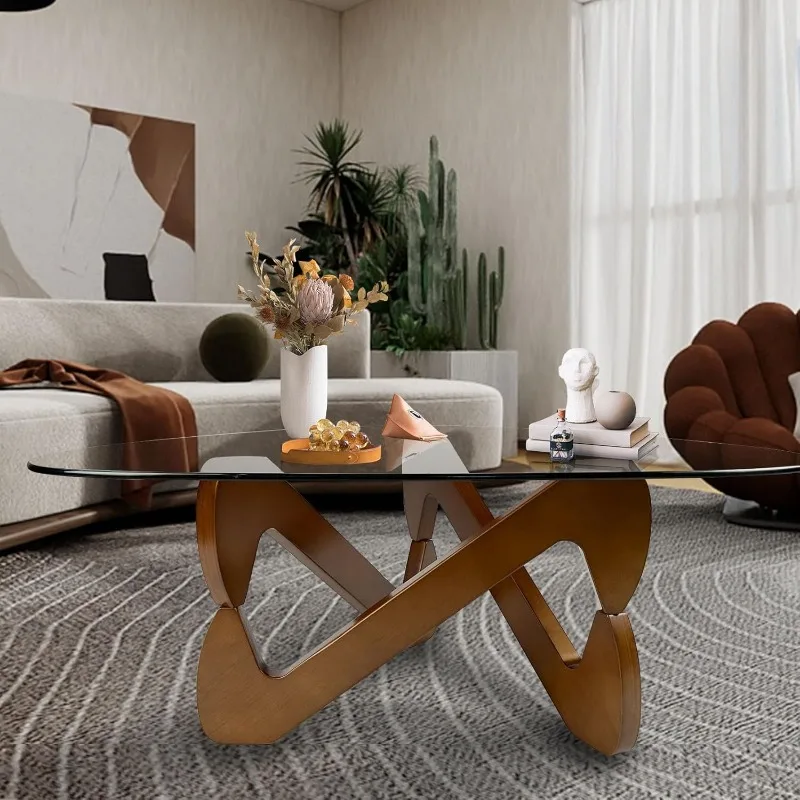
The beauty of glass coffee tables lies not just in their transparency but in the endless design possibilities they offer. From minimalist floating glass planes to elaborate artistic creations, these versatile pieces can serve as subtle supporting elements or bold statement pieces in your open living space.
Selecting the Ideal Shape for Your Layout
The shape of your glass coffee table dramatically impacts both functionality and visual effect in open-concept spaces:
Rectangle and Square: These classic shapes provide maximum surface area and work beautifully with traditional seating arrangements like sofas and armchairs. They create structured zones and provide ample space for books, decorative objects, and serving items.
Round and Oval: Circular forms eliminate sharp corners, promoting better traffic flow – crucial in open spaces where movement patterns may vary. Round coffee tables also naturally facilitate conversation by allowing everyone equal access and visibility, making them ideal for social seating arrangements.
Freeform and Organic: For those seeking a unique focal point, irregular shapes create visual interest and can complement curved architectural elements or soften spaces dominated by straight lines.
Multi-level and Tiered: These designs provide visual complexity and additional functionality, allowing for separated display areas while maintaining the light, transparent quality that makes glass so effective in open spaces.
Base Materials that Complement Open Concepts
While the glass top creates visual lightness, the base material establishes the table’s design personality and can anchor it within your broader aesthetic:
Metal Bases: Sleek stainless steel, warm brass, or industrial blackened metals provide structural integrity with minimal visual footprint. Their reflective qualities often complement the glass itself, enhancing the light-playing properties.
Wooden Elements: Natural wood bases bring organic warmth that balances glass’s inherent coolness. Oak, walnut, and teak are particularly popular choices that add textural interest while maintaining mid-century modern sensibilities.
Stone or Concrete Components: These substantial materials create a compelling contrast with the transparency of glass, offering visual weight that grounds the piece while still benefiting from the glass’s space-enhancing properties.
Acrylic and “Ghost” Elements: For maximum transparency, acrylic components create an almost invisible support structure, allowing the glass to appear as if floating in space – perfect for minimalist environments.
Rectangular coffee tables with mixed material bases offer particularly versatile options that can coordinate with existing furniture while maintaining the visual lightness that makes glass ideal for open spaces.
Innovative Features for Modern Living
Contemporary glass coffee tables go beyond basic functionality, incorporating clever features that enhance their utility in multi-purpose open spaces:
Adjustable Heights: Tables that can be raised or lowered accommodate different activities from casual drinks to laptop work to dining.
Nesting and Expandable Designs: Nesting coffee tables provide flexible surface options that can be expanded for entertaining or condensed to create more floor space when needed.
Storage Solutions: Shelves, drawers, and compartments that preserve transparency while offering practical storage – essential for maintaining clutter-free open spaces.
Unique Glass Treatments: Frosted sections, embedded elements, or subtle tints add visual interest while maintaining the fundamental benefits of glass.
Smart Features: Integrated lighting that highlights the glass’s reflective properties or built-in charging stations for electronics blend technology with aesthetics for truly modern living.
Selecting the Perfect Glass Coffee Table: Practical Considerations

While aesthetics are important, practical considerations ensure your glass coffee table will function beautifully in your open-concept space. Making informed decisions about size, glass type, and construction will lead to a selection that serves you well for years to come.
Getting Proportions Right: Size and Scale
Proper sizing creates harmony between your coffee table and surrounding furniture:
Length: The ideal coffee table should measure approximately two-thirds the length of your sofa for balanced proportions.
Height: The table surface should sit 1-2 inches below your sofa seat height (typically 16-18 inches from the floor) for comfortable reaching.
Width: Allow 18-24 inches of clearance between the table and surrounding seating to permit easy movement while keeping everything within comfortable reach.
Scale: The table’s visual weight should correspond to your seating arrangement – substantial seating needs a more prominent table, while lighter seating pairs better with more delicate designs.
For compact environments, understanding the best shape coffee table for small spaces becomes particularly important. Round and oval tables eliminate sharp corners that interrupt traffic flow, while tables with open bases maintain sightlines that make the room feel larger.
Choosing the Right Glass: Types and Thickness
Not all glass is created equal, and making informed choices ensures both safety and satisfaction:
Tempered Glass: Essential for safety, this heat-treated glass is 4-5 times stronger than standard glass and breaks into small, blunt fragments if damaged. This is the industry standard for coffee tables.
Thickness: For stability and durability, look for glass at least 10mm (3/8”) thick for small tables and 12-19mm (1/2”-3/4”) for larger surfaces.
Edge Treatments: Polished edges provide safety and elegance, while beveled edges create interesting light effects and add sophistication.
Finish Options: Beyond clear glass, consider frosted sections for disguising fingerprints, subtle tints that complement your color scheme, or textured surfaces for unique visual interest.
Understanding these options and implementing proper glass coffee table safety tips ensures your selection will be both beautiful and appropriate for your household’s needs.
Evaluating Frame Materials for Longevity
The structure supporting your glass top determines its stability and durability:
Metal Frames: Steel and aluminum offer excellent strength-to-weight ratios but look for quality welding and protective finishes to prevent corrosion.
Wooden Structures: Hardwoods provide warmth and durability but should feature proper joinery and finish protection against moisture.
Connection Mechanisms: Quality tables use secure mounting systems – look for rubber or silicone buffers between glass and frame to prevent damage from vibration.
Weight Considerations: While glass itself is heavy, consider overall weight if you anticipate occasionally moving the table. Some designs disassemble partially for easier relocation.
Styling Glass Coffee Tables in Open Living Spaces
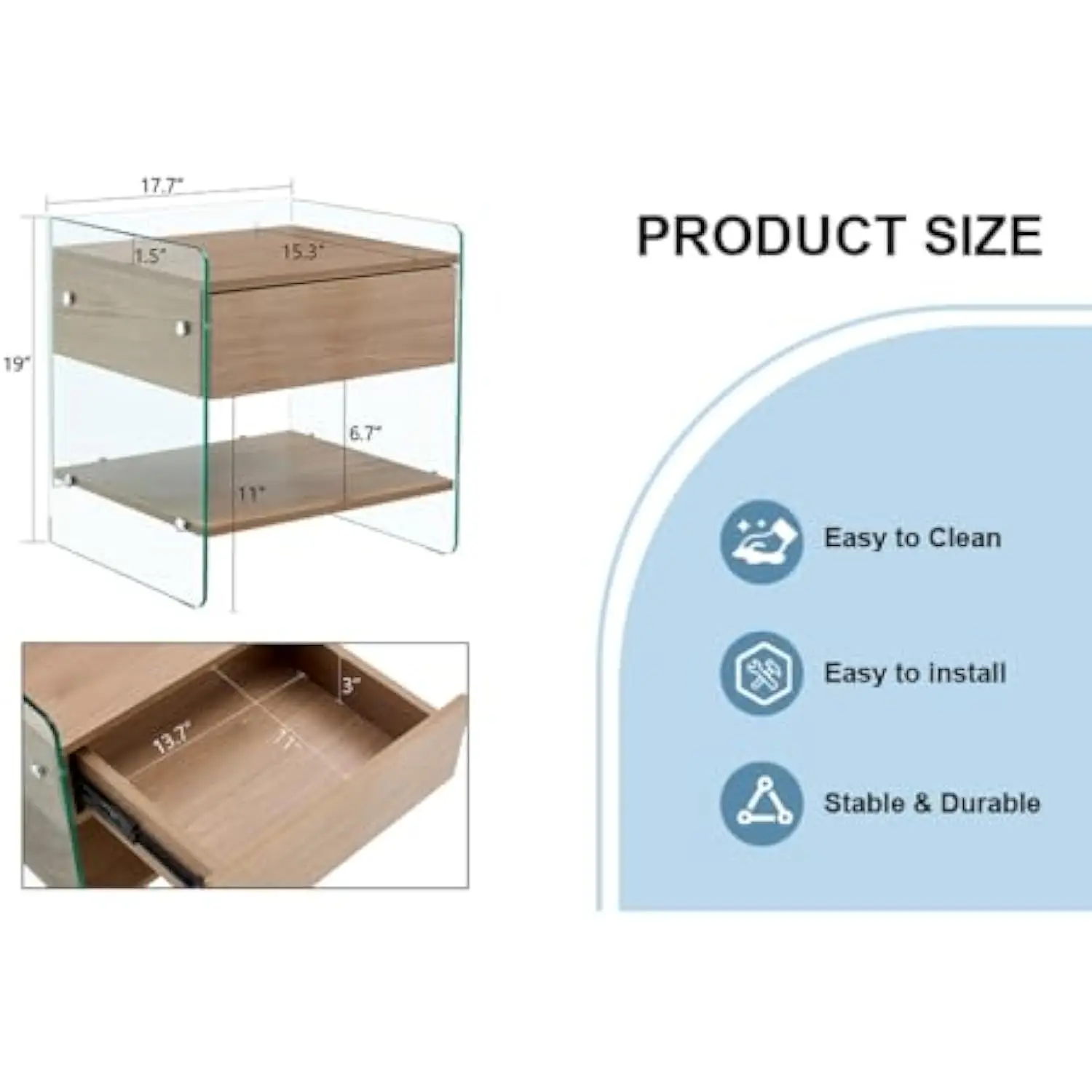
A thoughtfully styled glass coffee table complements your open-concept space while balancing form and function. The transparent nature of glass presents unique styling opportunities and challenges that differ from solid surfaces.
Balancing Visual Interest and Transparency
When styling a glass coffee table, preserving its transparent quality while creating visual appeal requires a thoughtful approach:
Embrace Negative Space: Allow portions of the glass to remain clear, letting the table’s transparency remain a feature rather than covering every inch.
Apply the Rule of Thirds: Divide your table visually into thirds and concentrate styling elements in two sections, leaving one more open.
Create Height Variation: Use objects of different heights to create visual rhythm and interest without overwhelming the surface.
Utilize Contrast: Select items that stand out against the transparency – objects with solid color, interesting texture, or substantial form create effective visual contrast.
Mastering styling for glass top coffee tables involves finding the right balance between decoration and functionality while honoring the table’s inherent transparency.
Practical Styling Elements for Everyday Living
Effective coffee table styling combines beauty and utility with these versatile elements:
Decorative Trays: These define spaces on the table surface while making it easy to move multiple items at once when you need the space for other uses.
Books and Magazines: Coffee table books with beautiful covers double as decor and entertainment while reflecting your interests.
Natural Elements: Small plants or fresh flowers bring life and organic texture that contrasts beautifully with glass’s smooth surface.
Sculptural Objects: Unique pieces with interesting shapes create focal points and conversation starters.
Practical Items: Remote controls, coasters, and other necessary items can be corralled in small decorative containers that contribute to the overall style.
The principles of glass coffee table decor styling suggest rotating a few seasonal elements throughout the year keeps your space feeling fresh and timely while maintaining a cohesive overall look.
Mid-Century Modern Glass Top Coffee Tables, Mid-Century Modern Glass Top Side & End Tables
$460.58 Select options This product has multiple variants. The options may be chosen on the product pageMid-Century Modern Glass Top Coffee Tables, Mid-Century Modern Vintage Coffee Tables, Mid-Century Modern Vintage Side & End Tables
$725.36 Select options This product has multiple variants. The options may be chosen on the product pageMid-Century Modern Large Coffee Tables, Mid-Century Modern Rectangular Coffee Tables
$603.26 Select options This product has multiple variants. The options may be chosen on the product pageMid-Century Modern Marble Top Coffee Tables, Mid-Century Modern Rectangular Coffee Tables, Mid-Century Modern White Coffee Tables
Price range: $163.28 through $189.22 Select options This product has multiple variants. The options may be chosen on the product pageMid-Century Modern Nesting Coffee Tables, Mid-Century Modern Nesting Table Sets
$361.45 Select options This product has multiple variants. The options may be chosen on the product pageMid-Century Modern Rectangular Coffee Tables, Mid-Century Modern White Coffee Tables
$605.68 Select options This product has multiple variants. The options may be chosen on the product page
Maintaining the Beauty of Glass: Care Tips
The appeal of glass coffee tables comes partly from their pristine, reflective surfaces, making maintenance an important consideration:
Regular Cleaning: Wipe surfaces at least weekly with a microfiber cloth to remove dust and fingerprints before they accumulate.
Effective Solutions: Use specialized glass cleaner or a simple solution of equal parts white vinegar and water for streak-free results.
Proper Technique: Spray cleaning solution onto the cloth rather than directly on the glass to prevent dripping onto frames or floors.
Protective Measures: Use coasters for beverages, felt pads under decorative objects, and avoid dragging items across the surface to prevent scratches.
Quick Response: Address spills immediately, especially acidic substances like wine or citrus juices that can etch glass surfaces if left untreated.
Glass Coffee Tables: Solutions for Common Open Space Challenges
While glass coffee tables offer numerous benefits for open-concept living, they also come with specific considerations. Addressing common concerns helps ensure your selection enhances your space perfectly.
Will a Glass Coffee Table Make My Space Feel Cold?
Many people worry that glass furniture might create a cold, sterile atmosphere, but this concern is largely unfounded when tables are properly integrated into your design. Glass actually takes on the character of surrounding elements, reflecting warm tones from nearby textiles, wood furniture, and wall colors. Adding warmth through your styling choices—wooden trays, textured objects, books with warm-toned covers—further enhances the table’s integration. The reflective quality of glass actually amplifies existing warmth in your space rather than diminishing it.
How Can I Make a Glass Table Child and Pet Friendly?
Families with young children or pets can still enjoy glass coffee tables by making smart choices. Opt for tempered or laminated safety glass that resists breaking and fractures into small, less dangerous pieces if damaged. Tables with rounded corners or completely circular designs eliminate sharp edges. Some manufacturers offer removable silicone edge protectors that are nearly invisible while providing added safety. Additionally, tables with solid wood or metal frames around the perimeter provide extra stability and protection for the glass edges where most impacts occur.
What’s the Best Glass Table for Multi-functional Open Spaces?
For spaces that serve multiple purposes, versatility becomes the key consideration. Look for adjustable-height designs that can transition from coffee table to dining or work surface. Nesting tables provide flexible configuration options for different activities. Tables featuring drawers or shelves beneath the glass offer storage while maintaining visual lightness. Strategic placement is equally important—positioning your table where it can serve both conversation and entertainment areas maximizes its utility. When considering glass versus wood coffee tables, glass options typically offer greater adaptability for multi-functional spaces due to their visual versatility.
The transparent elegance of glass coffee tables makes them ideal centerpieces for open-concept living spaces. Their unique ability to create visual spaciousness, enhance natural light, and maintain design continuity while providing functional surfaces makes them invaluable in contemporary homes. By selecting the right design, properly scaling it to your space, and styling it thoughtfully, your glass coffee table can truly transform your open living area into a harmonious, light-filled environment that perfectly balances form and function.
At Hearth Forms, we understand the transformative power of thoughtfully selected furniture pieces. Our collection of mid-century modern tables combines authentic design principles with quality craftsmanship to create pieces that don’t just fill space—they enhance it.

